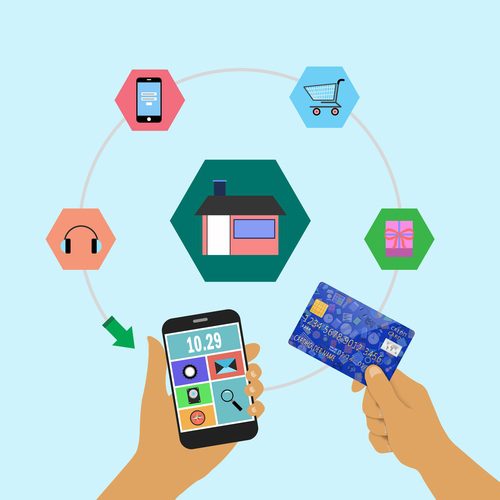Did you miss the Retail TouchPoints Connected Consumer Series webinars, broadcast March 27-30? (Perhaps you were part of the throng that descended on Las Vegas for Shoptalk.) Never fear, all eight sessions are now available on-demand.
This year’s series explored the many ways retailers can remove friction from the shopping experience — from using AI to deepen personalization to offering credit-wary Millennials new payment and financing options. Practical advice ranged from tips for maximizing mobile sales, empowering front-line employees, leveraging consumer-generated social content, and the true million-dollar question: finding out what your customers really want.
Following are key takeaways from the CCSeries sessions.
Personalization Depth Depends On Where Customers Are In Their Journey
When a consumer has a choice between buying a pair of shoes from you or your competition, how will you set yourself apart? It will most-likely come down to the way you communicate.
Greg Zakowicz of Bronto noted in this #CCSeries webinar that 77% of consumers have chosen, recommended or paid more for a brand that provides a unique, personalized experience. Hitting the customer at the right time and the right place with the right message is key to winning the sale.
Zakowicz shared tips on how personalized messaging makes a difference in the following phases of the customer journey:
- Cart abandonment: Test incentives like tiered discounting, shipping service upgrades, a free gift or just a friendly reminder;
- Browse abandonment: Don’t personalize this email or you will come across as Big Brotherish; and
- Post-purchase: Be engaging, helpful and speak to the customer’s perceived needs.
Perfecting Commerce Marketing With Deep Personalization
How Omnichannel Focus Boosts First-Time Purchases
Most retailers with omnichannel strategies in place have achieved good to significant ROI, according to RSM’s Retail Omnichannel Survey.
During this #CCSeries webinar, RSM’s Brion Reusche and John Nicolopoulos discussed the omnichannel technology solutions retailers are using to successfully increase first-time purchases and boost overall sales volume. They revealed that one of the biggest obstacles to omnichannel success is legacy retail systems, particularly when current architectures are misaligned with today’s retail challenges.
They also discussed key survey results:
- 97% of retail executives believe omnichannel is essential to their organization;
- 80% believe their company web site presents a major opportunity to increase overall market share; and
- 98% of retailers are increasing their omnichannel investments in the next 12 months.
Tackling Omnichannel Challenges With Technology
AI Gives Club Monaco A Personalization Edge
Apparel retailer Club Monaco got impressive results in just the first few months of using artificial intelligence (AI) to enhance its testing and customer segmentation programs:
- A 4.9% increase in per-session revenue with personalized product recommendations; and
- A 73.9% lift in email sign-ups.
But Zachary Martz, Club Monaco’s Project Manager for Digital Products and Enhancements, sees even bigger opportunities in the long term. AI’s ability to learn from, and improve on, each interaction means that the longer such programs run, the better they perform. Club Monaco is seeking to optimize the entire “funnel,” running multi-page journeys to enhance each stage of the customer journey.
2017 Imperative: Mastering AI-Driven Personalization
Five Ways To Improve The In-Store Experience Without Adding Cost
As many as 70% of retailers are focused on improving the customer experience by identifying customers and empowering associates with information in real time, making this the top customer engagement priority in 2017, according to Boston Retail Partners’ 2017 POS/Engagement Survey. But retailers face challenges with elevating the in-store experience without also increasing labor costs.
During the #CCSeries webinar, Evan Seder, Senior Implementation Manager, and Shannon D’Alessio, Director of Professional Services at Inkling, highlighted five case studies that illustrate how brands are boosting the store experience:
- Ramp up peak season effectiveness with store segmenting, mobile-ready documents and reference guides, up-to-date job aids for immediate product knowledge and loss prevention training;
- Engage and motivate Millennial workers with dynamic mobile content and equipping restaurants/stores with inexpensive tablets/laptops;
- Enable workers to do their jobs better with mobile by providing skills refreshers right on the sales floor;
- Drive operational efficiency by centralizing procurement procedures; and
- Provide faster, more effective onboarding by implementing a mobile enablement platform designed to increase compliance and reduce turnover and building quizzes and assessments directly into the content.
5 Success Stories Of Employee Empowerment
How To Get A Share Of $284 Billion In Mobile Sales
By 2020, mobile will account for 45% of all e-Commerce, totaling $284 billion in sales. Retailers need to take action now to secure their share of this m-Commerce bonanza. Eliza Novick, Client Solutions Manager at Curalate, provided several practical takeaways during this #CCSeries webinar. They included:
- Optimize your mobile strategy for omnichannel: Mobile doesn’t exist in a vacuum, and it’s most effective when it reinforces other online and in-store interactions;
- Go vertical with video: Vertically oriented videos are most effective in an environment where most users hold their devices upright. Snapchat reports that vertical video ads have 9X more complete views than horizontal ones; and
- Include apps: Mobile apps provide everything shoppers need at their fingertips and give retailers a prime oportunity to provide personalized promotions and communications. Retailers targeting their most engaged customers should leverage well-designed mobile apps.
How To Create Modernized Mobile Experiences
Consumer Credit Fears Fuel Modern Approach
Fear of credit is a real concern for many consumers, and the available options have been fueling that fire, especially among Millennials. As many as 60% of Millennials are worried about getting into debt, according to a survey of 1,000 consumers between the age of 22 and 44 that was recently conducted by Affirm.
The study found that:
- 72% of respondents who have carried a credit card balance have worried about how much their purchase would end up costing in total (including interest);
- 65% have a fear of debt; and
- 60% are moderately, very or extremely worried about getting into debt.
But these consumers also know they need to build credit. That’s why Max Levchin, a Co-Founder of PayPal, launched Affirm. By clearly stating — on the product or checkout page — exactly how much a monthly payment will be for a purchase, Affirm is helping retailers acquire, convert, optimize and retain loyal shoppers. During this #CCSeries session, executives from Rad Power Bikes and Garmentory shared the positive results they’ve seen in customer acquisition and conversion following the implementation of Affirm.
4 Ways Modern Credit Drives E-Commerce Success
Do You Know What Your Customers Actually Want?
Recent research conducted by Kibo identified three primary themes impacting the way retailers need to engage shoppers in 2017 and beyond:
- Consumer behavior continues to evolve. Shoppers want to see inventory online (39%), and are less inclined to visit the store when a web site doesn’t have it (80%).
- The path to purchase is prescriptive. A simplified shopping cart experience (78%), product reviews (82%) and interactive content (92%) are the top three elements with the largest impact.
- Fulfillment is no longer an afterthought: 68% of consumers expect delivery of online purchases within three days.
Other key takeaways from this #CCSeries session include:
- Price trumps brand loyalty;
- BOPIS is table stakes; and
- Personalization on the home page and in shopping carts is crucial.
To gain customer loyalty, retailers must “create consistent experiences, personalize every touch point that they can and focus on the touch points where conversions happen,” according to Kibo CMO Tushar Patel.
The Million-Dollar Retail Question: What Do Consumers Actually Want?
Four Steps To A Successful Visual Content Strategy
With nearly half (48%) of shoppers saying they would leave a web site if visual content is not available, retailers must prioritize imagery as part of a successful content strategy.
During this #CCSeries presentation, Heidi Burns, Product Marketing Lead, and Cat Nunnery, Managed Services Practice Lead for Bazaarvoice, presented four steps retailers should take to build a successful content strategy:
- Collect: Gather content from any source (a mix of consumer-generated content and branded content);
- Curate: Use human moderators to tag products;
- Display: Upon getting consumers’ consent, display content on your brand and social sites, mobile sites and in native advertising; and
- Analyze: Understand how their visual content performs to optimize the image producing the highest ROI.
Home goods brand Emma Bridgewater found new value from visual content, both online and offline, by placing consumer-generated Instagram photos into the Spring 2016 print catalog.













